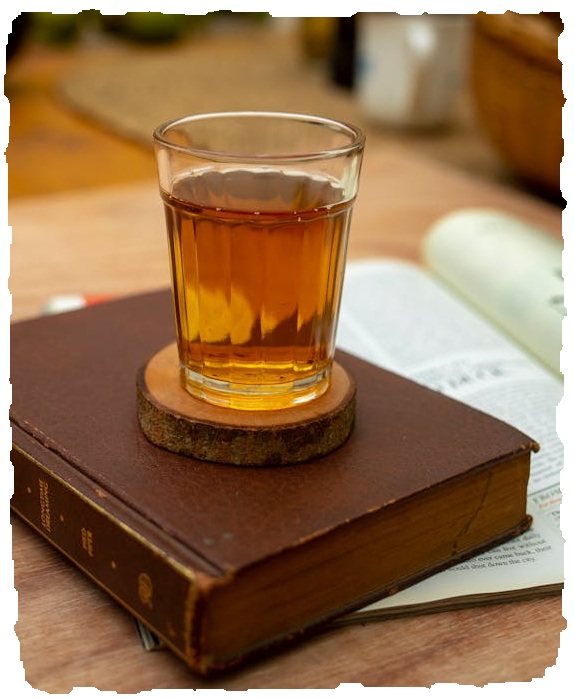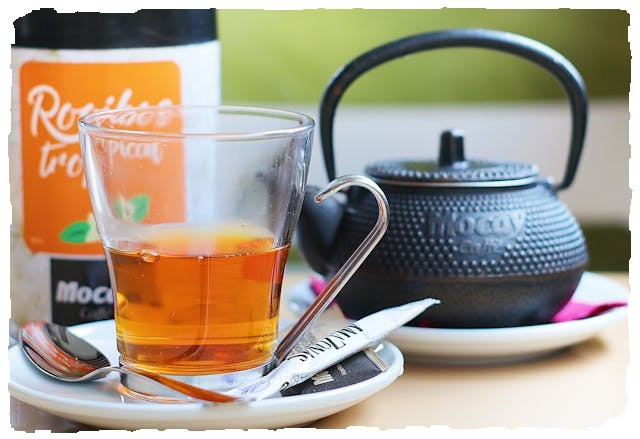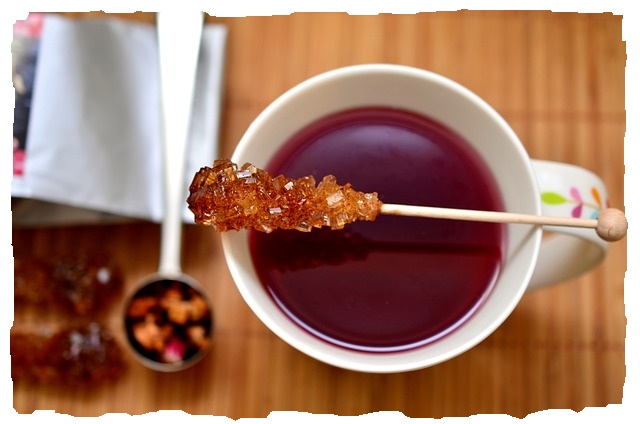Health Benefits of Rooibos Tea & A Brief History of the South African Red Bush Tea + Rooibos Chai
Interesting Insights into Rooibos Tea History

Health Benefits of Rooibos Tea.
Rooibos: History, Benefits and Pleasures of an Exceptional Herbal Tea
This is a little history about Rooibos, but also its many benefits. While this herbal tea is gaining in popularity, and rightly so, it's a great alternative to coffee or other caffeine-filled teas. And that's not all: it's packed with health benefits, acting as both a delicious and healthy beverage. Why deprive yourself? It's an herbal tea you need to know about and, if possible, buy in good quality. So, stay tuned and let's talk about Rooibos tea!
A Home Taste and Alternative to Traditional Herbal Teas

Rooibos originated in South Africa, where my family comes from. So, I grew up drinking Rooibos at home, and it's been an essential part of my life. It's a fairly common herbal tea for South Africans; we drink it almost every day. So it's not just a familiar taste, but I know it's a special herbal tea.
If you're interested in herbal teas, you know that they can have quite a "grassy" taste. If you explore teas like dandelion or nettle on their own, they don't taste extraordinary. But if you combine them with something like Rooibos, it's like adding the black tea you'd normally put in to get a delicious drink, except you're adding Rooibos, which is caffeine-free. It adds a delicious flavour and colour to your herbal tea and eliminates that earthy, grassy taste. So you can still enjoy the benefits of herbal teas, but in a milder, tastier way.
The Secret of Rooibos' Unique Growth

.
Rooibos tea grows in a very specific area of southern South Africa, called the Cederberg. It grows there specifically because there's something in the soil and micro-organisms of this region that simply helps this plant to thrive. They tried to commercialize the cultivation of Rooibos and had some success, but not a resounding success. Firstly, seeds are very hard to come by. The way this plant reproduces and creates more seeds is not typical, as far as I can tell. There must be a forest fire and other types of environmental change for these seeds to reproduce. What's more, it's difficult for these seeds to germinate.
The plant is considered a legume, and its harder outer shell doesn't open so easily. This can also be caused by forest fires, but also by animals or other types of environmental change in the region that allow this seed pod to open up and create more Rooibos bushes (also called “red bush” in English). This plant is not so easy to grow and is very specific to this region due to the microorganisms and soil type. As I said, it needs its environment to reproduce. So it remains indigenous to this region, and some people have figured out how to market it in the area, and there are Rooibos farms, but they're not that widespread.
Recent Popularity and Unsuspected Benefits

While all this is coming together, the history of Rooibos tea is not that old; it's quite recent. There's not a lot of information about it from ancient times. It's only really gained in popularity very recently, and you're starting to see a multitude of blends including Rooibos, because it tastes so good, but is also excellent for your health.
Let's talk about all its benefits for you! It's packed with antioxidants, which is a fancy term for "healthy". But there are some very specific antioxidants in this herbal tea that can give you all kinds of health benefits: the three most important polyphenols are aspalathin and quercetin. Polyphenols are very effective in boosting your immune system; they also reduce any kind of infection you might have in your body, and they can fight free radicals that simply shouldn't be in your body. So it's a wonderful antioxidant to have.
Aspalathin is specifically good for lowering your glucose levels. So, if you're at risk of diabetes or simply have high blood sugar, this is a great herbal tea to reduce that, as it contains an antioxidant that will do that for you. And finally, quercetin lowers your blood pressure and also keeps your heart rate steady. So that's a whole heap of health benefits concentrated in this herbal tea, and it tastes great too! I mean, of course, you should drink a cup of tea every day. Who wouldn't want those health benefits? It contributes so much to your body's nutrition. So it's very healthy for you, and it's delicious
Flavonoids and Other Essential Components

Another major component of Rooibos, and not the least, is its high flavonoid content. There are many types of flavonoids, and while I can't list them all specifically for Rooibos, it's scientifically proven that these powerful plant compounds are highly effective in fighting cancer and supporting your brain health.
But the benefits don't stop there. Flavonoids also help relieve nervous tension, alleviate allergic reactions and improve digestion, providing overall support for your well-being. When you drink Rooibos, you're not just drinking a tasty herbal tea; you're consuming a genuine natural “medicine”. It cares for your body, nourishes it deeply, and acts as a precious ally for your daily health. So it's an incredibly healthy herbal tea to make a regular part of your routine.
Rooibos Chai Lattes: An Explosion of Flavours and Benefits
Another way to use Rooibos is to make Rooibos chai lattes. Chai tea is very popular, of course. All the whole spices make it a tasty, spicy drink, especially in the cooler seasons. So, if you're interested, instead of making it with black tea, you can make your own Rooibos. We often do! A delicious chai latte, combined with healthy Rooibos and all the health benefits you get from these spices. It's a flavour bomb, a healthy cup of medicine you're consuming, which I think is a wonderful drink to have in cooler weather. I've also made Rooibos chai lattes before.
Our Ways of Using Rooibos at Home
The things we make with Rooibos tea at home are simply pure Rooibos. I'll use a teaspoon of Rooibos tea and steep it in about a cup (or rather a mug) of boiling water. Then, once it's brewed well, I'll add milk if you like to take your black tea with milk; this will be the perfect way to drink this herbal tea.
If you're starting to drink nettle tea because you've read all about the benefits of nettle leaf tea, or dandelion tea, or lemon balm, or whatever, this is a great herbal tea to combine with these kinds of leafy herbs, because it can make the benefits of these plants tasty in a delicious herbal tea. Now, if I make a blend like this, usually I won't add milk, but drink these herbal teas straight. I'll link recipes below if you're interested in some of the herbal blends I've already made with Rooibos tea at home, as I'm experimenting with loose teas, but also drying some of the herbs from our garden and starting to make tea from them.
To discover a wide tea selection, including organic tea, and to easily buy tea online, visit the Inasbay marketplace. You'll find a variety of teas to complement your home blends or to explore new flavours.


 Login with Google
Login with Google

